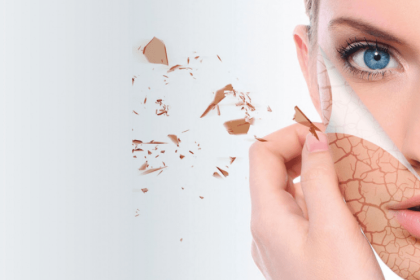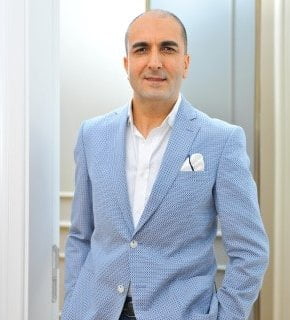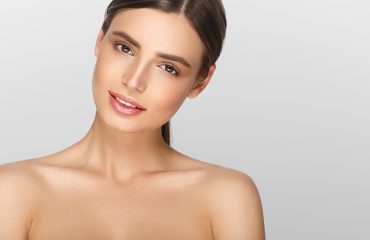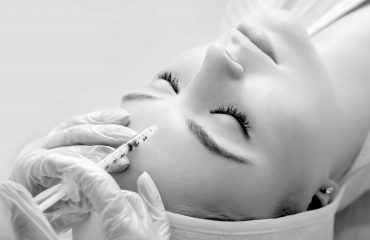
What is Peeling?
Peeling refers to the removing of the top most layer of dead skin cells to reveal the fresh layer of new and smoother skin underneath. The peeling, which acts as a light rubbing of the skin, provides the removal of the slough on the surface of the skin thanks to the small foaming particles it contains. In this way, the skin gains a much more fresh and youthful appearance. Peeling can be applied all over the body, although it is applied mostly to the face. Peeling can be applied to everyone, whether male or female.
What are the Benefits of Peeling?
As a result of the elapsed years and environmental factors, signs of aging occur on the face, such as prolapses, blemishes, wrinkles, loss of elasticity and colour change. Today, it is possible to find solutions for such problems thanks to innovations in the field of aesthetics. Peeling, which provides us this opportunity and is one of the most popular procedures in the world, offers personalised skin treatment with a wide range of options.
Peeling treatment has many positive effects. It attracts the attention of both men and women by offering solutions to many skin problems such as:
- Removal of sloughs on the skin surface,
- Underneath living skin appear on the surface,
- Production of healthy skin cells,
- The person looks much younger,
- Elimination of blemish problems on the skin,
- Reduction of wrinkles,
- Providing elasticity to the skin,
- Elimination of tired look.
Peeling, which is a much shorter and simpler application compared to interventions such as facial lifting or laser treatment, is quite ideal for persons who want quick results. Apart from the peeling interventions performed with the peeling device, there are also peeling products in the market that can be applied simply at home. However, they are superficial and do not provide in-depth benefits.
How to Perform Peeling?
Peeling is not a standard procedure. It offers a wide variety of options depending on the needs and expectations of the person, and it has a unique skin treatment feature. Peeling is performed in 3 ways according to the peeling need of the skin:
- Superficial Peeling
- Medium Peeling
- Deep Peeling
Superficial peeling is fast and simple. Since the peeled skin is very thin, its results are also mild. As it is generally performed with fruit acids, persons can return to their daily lives immediately. However, procedures that are described as medium and deep peeling are preferred for more significant skin problems. As the procedures are performed in more depth, they are applications that require much more attention and expertise and their healing periods necessarily extend in direct proportion to the depth of the procedures.
What are Peeling Methods?
Other than the depth of peeling on the skin, peeling also varies depending on its methods. Peeling methods, which are divided into three classes as carbon, enzyme, and chemical peeling, vary in terms of their effects. For this reason, the method that is most suitable for the person’s needs is selected.
- Carbon Peeling
In this method, which is used to remove large pores, to give elasticity to the prolapsed skin and to smooth it, carbon serum is applied to the surface after it is cleaned. The skin is treated by applying a laser which helps absorption the serum. With this method, under-eye bruises are also removed. The number of sessions varies depending on the needs of the person.
- Enzyme Peeling
This treatment method is often used to remove blemishes and revitalise the skin. It is especially effective in birth, acne, and sun blemishes. While removing the blemishes, the skin also gains vitality and freshness. This procedure ensures the melanin in the skin to be distributed homogeneously. First of all, the skin is cleaned, and a mask is applied to it. The mask is cleaned after 8 hours. Then, the cream given to the person is used regularly for three months. During this process, the results of the treatment are followed.
- Chemical Peeling
In this method, peeling consisting of various acidic and basic chemicals is applied to the skin. It provides the peeling of the worn skin layer. After the procedure, a much more vibrant, stretched and fresh skin appears. It is very important not to peel the scurf formed after peeling and avoid sunlight during this process. During this period, the moisturiser given by the doctor should be used regularly. The number of sessions varies depending on the needs of the person.
Peeling Frequently Asked Questions
What is the price of peeling?
It is against the law in Turkey for the healthcare organisations including private practices to indicate prices online for interventions, treatments or consultations. Please contact us by calling or texting ?+90 541 334 3484 (WhatsApp available) or ☏ +90 212 257 1515 for the cost of the intervention or any other enquiries related to the intervention.
Is there any harm in the peeling process?
Some side effects may occur if you have a skin sensitivity, especially against the ingredients in the peeling masks. Ingrowth, burning, skin rashes and colour changes, itching, irritation or scurfs are conditions that may occur after chemical peeling. Protecting from excessive sunlight, not plunging into the pool and using the products recommended by the doctor for a couple of days after peeling will reduce the side effects.





You must be logged in to post a comment.